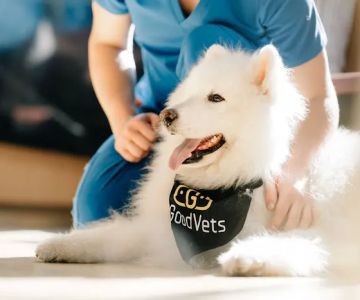How to Handle Pet Dental Emergencies
As a pet owner, I quickly learned how crucial dental health is for my furry friends. Just like humans, pets can face dental problems that range from minor discomforts to major emergencies. After experiencing my own pet’s dental crisis, I realized that handling a pet dental emergency requires quick thinking and proper action. In this article, I’ll share what I’ve learned about managing pet dental emergencies, including recognizing symptoms, what steps to take, and how to prepare for future dental care.
1. Recognizing the Symptoms of a Pet Dental Emergency
Dental issues in pets can often go unnoticed until they become a serious emergency. The signs can be subtle at first, but knowing what to look for can help you act quickly. After my dog, Max, experienced his first dental emergency, I became more vigilant in observing his behavior for signs of oral discomfort. Here are the most common symptoms that could indicate a dental emergency in your pet:
1.1 Excessive Drooling or Difficulty Eating
If your pet is suddenly drooling more than usual or has difficulty eating, this could be a sign of a dental problem. Max once started drooling excessively and hesitated to chew his food. I immediately became concerned and noticed his gums were swollen, which led to an emergency trip to the vet. Drooling or difficulty eating can often signal pain or an underlying infection in your pet’s teeth or gums.
1.2 Bad Breath or Foul Odor
While pets naturally have some odor in their mouths, persistent bad breath, especially when it’s unusually strong or foul, can indicate a dental issue. Bad breath in pets, especially if accompanied by a reduction in appetite or changes in their eating habits, can point to infections or decaying teeth. Max’s breath used to be a little musty, but when it became unbearable, I knew something was wrong.
1.3 Bleeding Gums or Teeth
If you notice your pet’s gums are bleeding or if their teeth appear loose, it’s crucial to act fast. This can be a sign of gum disease, tooth decay, or even an injury that needs urgent care. When I saw Max’s gums bleed after a simple chew on his favorite toy, I realized this was a dental emergency that needed immediate attention.
2. Immediate Steps to Take During a Pet Dental Emergency
Once I recognized that Max was in distress due to a dental problem, I knew I had to take immediate action. Here’s what I learned about the crucial steps you should take when handling a pet dental emergency:
2.1 Stay Calm and Assess the Situation
In the midst of a dental emergency, it’s easy to panic, especially when it involves your beloved pet. However, staying calm will help you think clearly and act quickly. First, assess the situation and determine whether the problem is urgent enough to warrant immediate vet attention. If your pet is in significant pain, bleeding heavily, or unable to eat or drink, don’t wait—seek professional help right away.
2.2 Apply a Cold Compress for Swelling
If your pet’s mouth is swollen or inflamed, applying a cold compress can help reduce swelling and provide some relief until you can get to the vet. I applied a cold compress to Max’s cheek during his dental emergency, which seemed to ease his discomfort slightly. Just make sure to wrap the cold compress in a towel to prevent direct contact with the skin, and limit its application to about 10-15 minutes at a time.
2.3 Contact a Veterinarian Immediately
The most important step during a dental emergency is getting your pet to a veterinarian. Call your vet’s office right away and explain the symptoms. Many veterinary offices will prioritize emergency situations and offer advice on what to do before you arrive. In Max’s case, the vet advised me to bring him in immediately for an evaluation. Early intervention is key to preventing further damage to your pet’s teeth and gums.
3. Veterinary Treatment for Pet Dental Emergencies
Once at the vet, I learned just how critical it is to address dental problems promptly. A skilled veterinarian can perform diagnostic tests to determine the extent of the dental issue and provide treatment options. For Max, the vet identified a severe case of gingivitis, which required an urgent cleaning and follow-up care to prevent tooth loss.
3.1 Dental Cleanings and Examinations
In many cases, a dental emergency will require a thorough cleaning, especially if there’s a buildup of tartar or plaque that’s contributing to the problem. The veterinarian may need to perform an anesthetized dental cleaning, which involves scaling the teeth to remove any buildup and polishing them for a smooth surface. This cleaning can help prevent infections and further complications. It’s important to follow up with regular dental exams and cleanings to prevent future emergencies.
3.2 Tooth Extractions
If the dental emergency is caused by a severely damaged or infected tooth, your veterinarian may recommend tooth extraction. This is often necessary when a tooth cannot be saved and is causing significant pain. Although tooth extraction can sound frightening, it’s often the best solution to avoid ongoing discomfort or the spread of infection. I was relieved to learn that after Max’s tooth extraction, he recovered quickly and was no longer in pain.
3.3 Medications and Pain Relief
After the emergency treatment, the vet will often prescribe pain relief medications or antibiotics to ensure your pet remains comfortable during recovery and that any infection is properly treated. I was given antibiotics for Max to prevent any potential infections from the extraction site, as well as pain relief to help him heal. It’s crucial to follow the prescribed dosage and administer the medications exactly as instructed to ensure your pet’s recovery goes smoothly.
4. Preventing Future Dental Emergencies
Once Max recovered from his dental emergency, I became more proactive about maintaining his dental health. As I researched further, I discovered a few key preventive measures that can significantly reduce the risk of dental issues in pets:
4.1 Regular Brushing and Oral Care
Brushing your pet’s teeth is one of the most effective ways to maintain their dental health. I started brushing Max’s teeth regularly using a pet-safe toothbrush and toothpaste. While it took some time for him to get used to it, I noticed a huge improvement in his breath and gum health. Regular brushing helps prevent plaque buildup, which can lead to tartar, gum disease, and eventually dental emergencies.
4.2 Dental Chews and Toys
Dental chews and toys can also help reduce plaque buildup and keep your pet’s teeth strong. Max loves his dental chews, which not only satisfy his chewing instinct but also help keep his teeth clean. Be sure to choose high-quality dental products that are designed to promote oral health, and always supervise your pet while they chew.
4.3 Regular Veterinary Checkups
Just like any other aspect of your pet’s health, regular veterinary checkups are essential for maintaining good dental hygiene. During each checkup, the vet will examine your pet’s teeth and gums to ensure everything is healthy and address any potential issues before they become emergencies. Preventive dental care is key to keeping your pet’s smile bright and their mouth healthy.
5. Conclusion
Handling a pet dental emergency is never easy, but with the right knowledge and preparation, you can manage the situation effectively and ensure your pet receives the care they need. The key is recognizing the signs early, taking immediate action, and working closely with a trusted veterinarian to address the issue. By following preventive measures and staying proactive about your pet’s dental health, you can reduce the risk of future dental emergencies and keep your furry friend’s smile healthy and happy.











